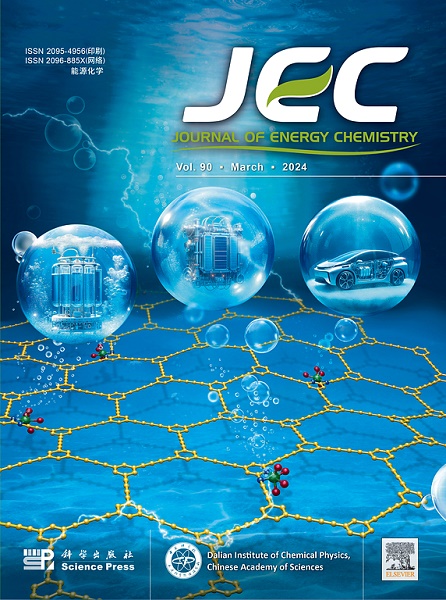CO2-enhanced alkane aromatization over Cu-ZSM-5 zeolite: Insights into active sites and catalytic performance
IF 13.1
1区 化学
Q1 Energy
引用次数: 0
Abstract
Aromatization of alkanes represents an important process in the chemical industry, traditionally relying on noble metal catalysts. Developing a non-noble metal catalyst and a relevant new process offers significant potential for promoting technologic progress in this field. Herein, we present Cu-ZSM-5 zeolite as a highly effective catalyst for alkane aromatization, achieving outstanding aromatics selectivity. In-situ Fourier transform infrared spectra of adsorbed nitric oxide, high-angle annular dark field scanning transmission electron microscopy, X-ray absorption spectroscopy, and electron paramagnetic resonance analyses reveal that the Cu2+ species act as the primary active centers for aromatics formation. During aromatization of alkanes, the reduction of Cu2+ to Cu+ species correlates with diminished aromatics selectivity. Notably, introducing CO2 into the reaction feed not only enhances aromatics selectivity by maintaining Cu2+ species in their active oxidation state under reducing conditions, but also improves catalytic stability by eliminating coke. Furthermore, CO2 is converted into CO and aromatic products during the reaction, offering a novel way for CO2 utilization through the coupling reaction of alkane and CO2.

Cu-ZSM-5沸石上co2增强烷烃芳构化:活性位点和催化性能的研究
烷烃的芳构化是化学工业中的一个重要过程,传统上依赖于贵金属催化剂。开发一种非贵金属催化剂及其相关新工艺对促进该领域的技术进步具有重要的潜力。在此,我们发现Cu-ZSM-5沸石作为一种高效的烷烃芳构化催化剂,具有优异的芳烃选择性。吸附一氧化氮的原位傅里叶变换红外光谱、高角环形暗场扫描透射电镜、x射线吸收光谱和电子顺磁共振分析表明,Cu2+是芳烃形成的主要活性中心。在烷烃芳构化过程中,Cu2+还原为Cu+与芳烃选择性降低有关。值得注意的是,在反应进料中引入CO2不仅可以通过在还原条件下保持Cu2+的活性氧化态来提高芳烃的选择性,还可以通过消除焦炭来提高催化稳定性。此外,CO2在反应过程中转化为CO和芳香族产物,为烷烃与CO2的偶联反应提供了新的CO2利用途径。
本文章由计算机程序翻译,如有差异,请以英文原文为准。
求助全文
约1分钟内获得全文
求助全文
来源期刊

Journal of Energy Chemistry
CHEMISTRY, APPLIED-CHEMISTRY, PHYSICAL
CiteScore
19.10
自引率
8.40%
发文量
3631
审稿时长
15 days
期刊介绍:
The Journal of Energy Chemistry, the official publication of Science Press and the Dalian Institute of Chemical Physics, Chinese Academy of Sciences, serves as a platform for reporting creative research and innovative applications in energy chemistry. It mainly reports on creative researches and innovative applications of chemical conversions of fossil energy, carbon dioxide, electrochemical energy and hydrogen energy, as well as the conversions of biomass and solar energy related with chemical issues to promote academic exchanges in the field of energy chemistry and to accelerate the exploration, research and development of energy science and technologies.
This journal focuses on original research papers covering various topics within energy chemistry worldwide, including:
Optimized utilization of fossil energy
Hydrogen energy
Conversion and storage of electrochemical energy
Capture, storage, and chemical conversion of carbon dioxide
Materials and nanotechnologies for energy conversion and storage
Chemistry in biomass conversion
Chemistry in the utilization of solar energy
 求助内容:
求助内容: 应助结果提醒方式:
应助结果提醒方式:


